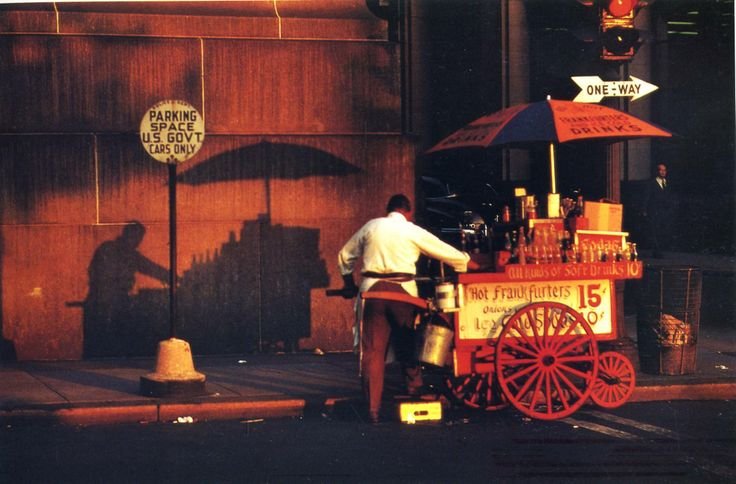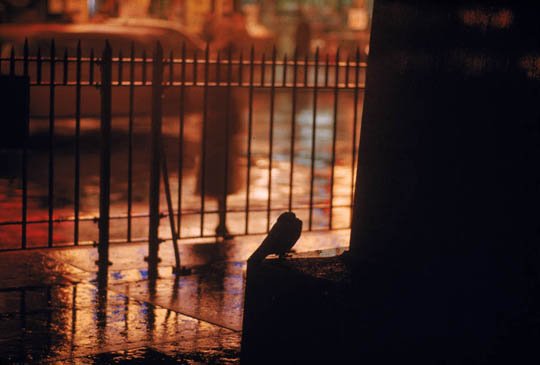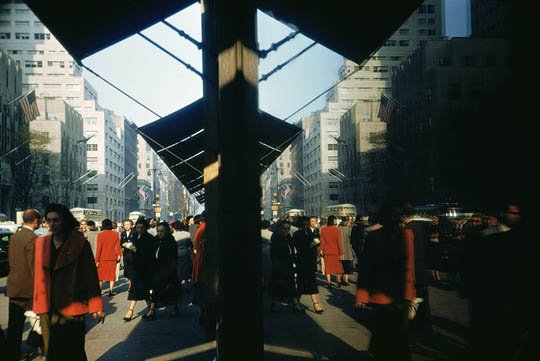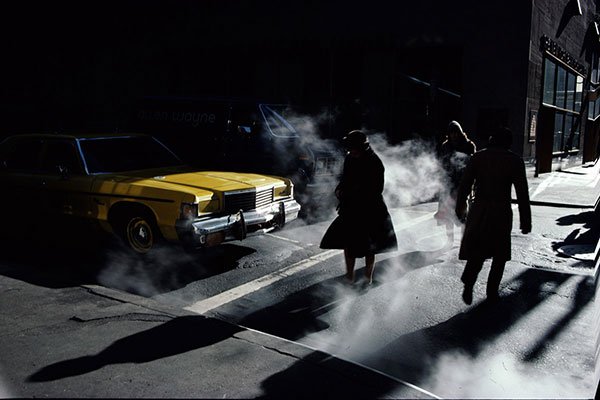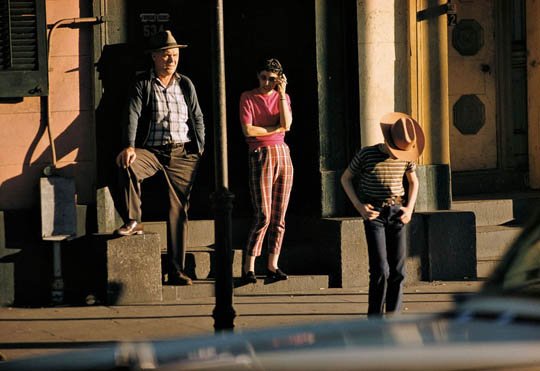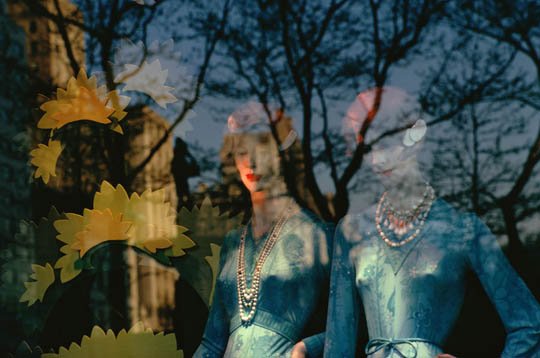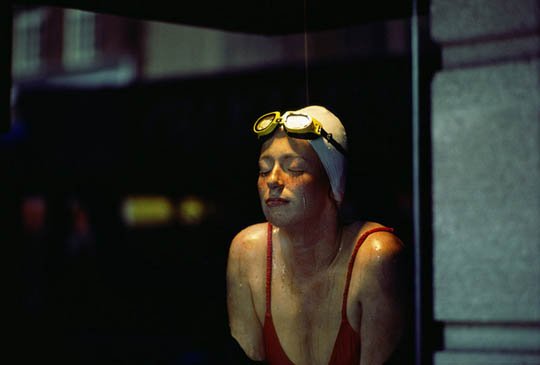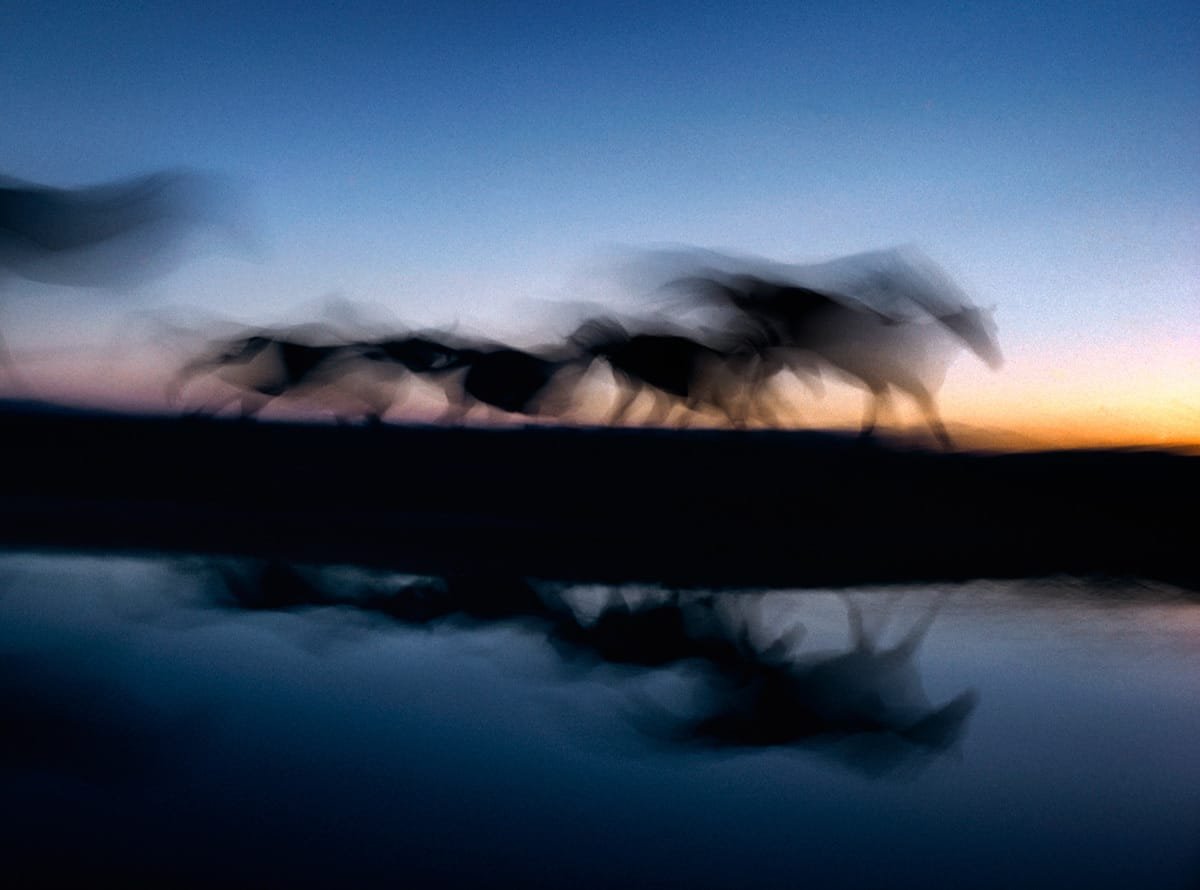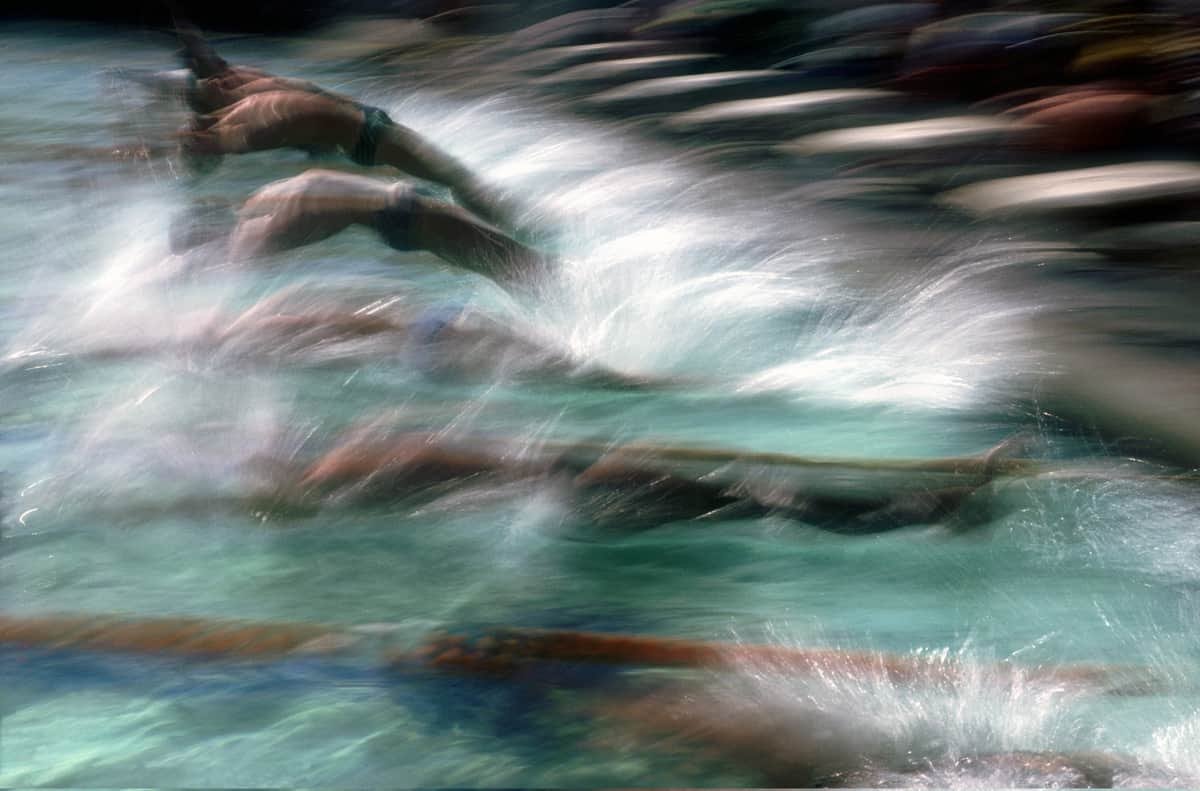Which is Better? Black and White or Colour?
“One very important difference between color and monochromatic photography is this: in black and white you suggest; in color you state. Much can be implied by suggestion, but statement demands certainty... absolute certainty.” Paul Outerbridge
"I have done no color of consequence for thirty years! I have a problem with color—I cannot adjust to the limited controls of values and colors. With black-and-white I feel free and confident of results". Ansel Adams
__________________________________________________
[3] - Ernst Haas
Ernst Haas, Austrian photographer, early portrait
©2023 ERNST HAAS ESTATE
Ernst Haas, born on March 2, 1921, in Vienna and passed away on September 12, 1986, was a renowned photojournalist and a trailblazer in the field of colour photography. He revolutionized colour photography using a 35mm camera (Leica) and primarily Kodachrome film. His images showcased an intense array of colours and light. He used various techniques to create evocative and metaphorical works. He employed shallow depth of field, selective focus, and blurred motion to transform objects from what they were to what he wanted them to be. He aimed to capture the joy of looking and human experience in his photography.
Throughout his four-decade-long career, Haas successfully bridged the gap between photojournalism and photography as a form of artistic expression. He was a pioneer in the use of colour photography and his work was widely published in magazines such as Life and Vogue. In 1962, his photographs were featured in the first-ever solo exhibition of colour photography at the Museum of Modern Art in New York. He also served as the president of Magnum Photos, a cooperative representing some of the world's most influential photographers. Haas' book, The Creation, published in 1971, was a huge success, selling over 350,000 copies.
"I never really wanted to be a photographer. It slowly grew out of the compromise of a boy who desired to combine two goals— explorer or painter. I wanted to travel, see and experience. What better profession could there be than the one of a photographer, almost a painter in a hurry, overwhelmed by too many constantly changing impressions? But all my inspirational influences came much more from all the arts than from photo magazines."
Haas faced difficulties in pursuing his formal education due to the war, but he was self-taught and put in a lot of effort to learn about photography. During his time as the "school photographer" of the Max Reinhardt Film Seminar in 1941, he was able to attend technical classes and developed an interest in filmmaking that lasted throughout his life. Haas used his family's vast library, as well as museums and libraries in Vienna, to expand his knowledge. He focused on studying philosophy and poetry, which helped him shape his beliefs about the creative potential of photography.
Billboard Painter, NY 1952
Locksmith Sign, NY 1952
Reflection—42nd Street, NY 1952
View from Notre Dame, Paris 1955
A cracked pane of glass, 1963
"I see what I think
I see what I feel because I am what I see
If there is nothing to see and I still see it,
That's poetry
If there is something to see and everybody sees it
That's photography."
Haas was a free artist, poet, and philosopher not hindered by tradition or theory. In 1949, during the early stages of colour photography, Hass began experimenting with it. He had already become proficient in the formal structures and style of photojournalism and street photography, but he increasingly became interested in using colour film as a tool for the metaphorical language of the image. Having lived through the horrors of World War II in Europe, Haas saw colour as a source of pure emotional joy and physical richness, a welcome respite from the bleak grey landscape of war.
Haas believed that colour represents joy. He once said that joy is not something one thinks about, but rather something that carries a person. Haas saw his change from one material to another as a symbolic and psychological progression in response to the outside world. He considered the war years and the five bitter post-war years as the black and white or grey years. However, those times were over, and he wanted to celebrate the new times, filled with new hope, by using colour, similar to the beginning of a new spring.
In 1951, as part of his Magnum assignment, Haas moved to New York City and started capturing the city's essence through his lens, resulting in a series of photographs titled "Images of a Magic City". After two years, Life magazine featured his work as their first-ever colour essay, spanning over 24 pages across two issues - a groundbreaking achievement. Unlike other photographers of his time, he did not merely use colour to document reality. Instead, he aimed to capture the surreal quality of dreams. He imbued ordinary objects and figures with new and deeper meanings. For instance, a reflection of a storefront could reveal hidden depths of the urban landscape. Similarly, torn posters peeling off a wall could transform into an art gallery. Haas experimented with colours and tones that had never been seen before in printed colour to evoke emotions in the viewer. His work was infused with a guiding intelligence that was both enlightening and humorous.
Haas, like his fellow photographers, took to the streets with his camera. However, unlike Weegee, Klein, Model, or Arbus, he did not adopt a confrontational approach. Nor did he document society with a critical eye, as Robert Frank did. Instead, Haas pursued a more poetic style, akin to Saul Leiter, Louis Faurer, David Vestal, and Sid Grossman. He sought a photographic equivalent of gestural drawing, using techniques such as soft focus, selective depth of field, and overexposure to create a lasting impact. Haas is also known for pioneering the concept of deliberate blur. He used time exposure against a continuous color background to create a controlled blur effect.
"I am a composer / I compose pictures,"
"I photograph fiction / as you can't find what I found."
"Photography became a language with which I have learned to write both prose and poetry."
Szarkowski had written about Haas, saying that in colour photography, the colours often served as a mere decoration that stood between the viewer and the actual content of the picture. However, Ernst Haas resolved this problem by making the colour sensation the subject of his work. According to Szarkowski, no photographer has been as successful as Haas in expressing the pure physical joy of seeing.
REFLECTIONS BY HAAS
*There are two kinds of photographers: those who compose pictures and those who take them. The former work in studios. For the latter, the studio is the world.... For them, the ordinary doesn't exist: every thing in life is a source of nourishment.
*The best pictures differentiate themselves by nuances...a tiny relationship - either a harmony or a disharmony - that creates a picture.
*A picture is the expression of an impression. If the beautiful were not in us, how would we ever recognize it?
*With photography a new language has been created. Now for the first time it is possible to express reality by reality. We can look at an impression as long as we wish, we can delve into it and, so to speak, renew past experiences at will.
*I want to be remembered much more for a total vision than for a few perfect single picture.
*I am not interested in shooting new things - I am interested to see things new.
*There is only you and your camera. The limitations in your photography are in yourself, for what we see is what we are.
*The most important lens you have is your legs.
*You become things, you become an atmosphere, and if you become it, which means you incorporate it within you, you can also give it back. You can put this feeling into a picture. A painter can do it. And a musician can do it and I think a photographer can do that too and that I would call the dreaming with open eyes. -
*The limitations of photography are in yourself, for what we see is only what we are.
*The camera doesn't make a bit of difference. All of them can record what you are seeing. But, you have to SEE.
*Best wide-angle lens? Two steps backward. Look for the 'ah-ha'.
*You don’t take pictures; the good ones happen to you.
*Living in a time of crusical struggle, the mechanization of men, photography for me became nothing but another example of this paradoxical problem: how to owercome, how to humanize the machine on which we are so very dependent – the camera. This mechanical instrument forces and enables us for for the first time to learn hwo to read and write stimultaneously visual aspects resulting from a discussion with reality expressed with a language of light called photography. Disinterested in scientific objectivity, I want to transform reality with a poetic conception by relating the unrelated into vision – forcing the viewer to feel what I felt as well as to think what I thought. I believe photography can be an art and I want to give everything to help achieve it. There is only you and your camera – the limitations of your photography are in yourself, for what we see is only what we are.
- Ernst Haas, The Best of Popular Photography by Harvey (V. Fondiller , ISBN: 0871650371 , Page: 97-98)
For me Ernst was sensitivity itself. He had an irresistible charm and wit, a knowledge of the world, its color, its stratis ficatious since its origin, various cultures he expressed so vividly in his photographs.He disappeared swiftly like a comet leaving behind a long trail of human understanding and with such finesse.I can hear him bursting out laughing and making fun of me if he read this.
– Henri Cartier-Bresson
In my estimation we have experienced an epoch in photography. Here is a free spirit, untrammeled by tradition and theory, who has gone out and found beauty unparalleled in photography. Some say it is an imitation of painting. Tommyrot! Show me a painter who can bring forth the power of this boy. Let us all stand and pay him tribute.
– Edward Steichen – The Museum of Modern Art, New York
The color in color photography has often seemed an irrelevant decorative screen between the viewer and the fact of the picture. Ernst Haas has resolved this conflict by making the color sensation itelf the subject matter of his world. No photographer has worked more successfully to express the sheer physical joy of seeing.
–John Szarkowski – The Museum of Modern Art, New York
He made us see his color. when some photographers take pictures, it doesn't matter whether they are working in black- and-white or color. But when Ernst shoots color, it makes all the difference in the world.
–Cornell Capa – International Center for Photography, New York
From letter dated October 5, 1961:
Dear Ernst Haas:
I wish I could tell you how much I appreciated your color photographs which you projected at the Asilomar Conference. I have seen thousands of color pictures, most I dislike for various reasons—sheer dullness to sheer decadence! The particular quality of your work was refreshment. I hope you know what I mean. The pseudo-abstract stuff which clutters so much of the contemporary art world contributes little to the spirit. Your work—although your sources were both simple natural situations and simple "junk"—possesses a direct quality of beauty which thoroughly transcends "subject." My congratulations! ( . . . )
I am very happy you exist. Photography is a better art because you exist. Can I say more? No! Please come out here and stay awhile with us. Again, thanks.
Ansel Adams
He's been incredibly copied since the very beginning. The trouble is that most of Ernst's imitators over the years have been photographically vulgar and obvious, and in a way that's reduced his work retroactively, which is a shame. But his own eye and sense of observation are undiminished. He just does it better than all of them.
– Elliot Erwitt
A writer should build sentences that are full of color and shadows. This is where painters and photographers can teach us so much. A writer can replicate the sounds of great composers or the feel of songs that move them, moving words around so that sentences bear a certain weight. So should writers look at photographs and seek to emulate the uses of light and color. Craft a sentence in the style of a photographer and see how the shapes change.
Ernst Haas taught me a great deal. His use of color is extraordinary, and he once took the camera of a child—a simple Kodak model—and created a typical, brilliant photograph. It is, he said, in the eye—the creative eye—and the means by which you capture it is quite beside the point. So whatever you write— and for whomever you write it—endow it with the most truth and artistry you can.
Haas is really remarkable. If you look at his work, you start to see elements of Richard Estes and George Tooker, two other artists you should be studying.
— Tennessee Williams – Interviewed by James Grissom, New Orleans, 1982
©2023 ERNST HAAS ESTATE






